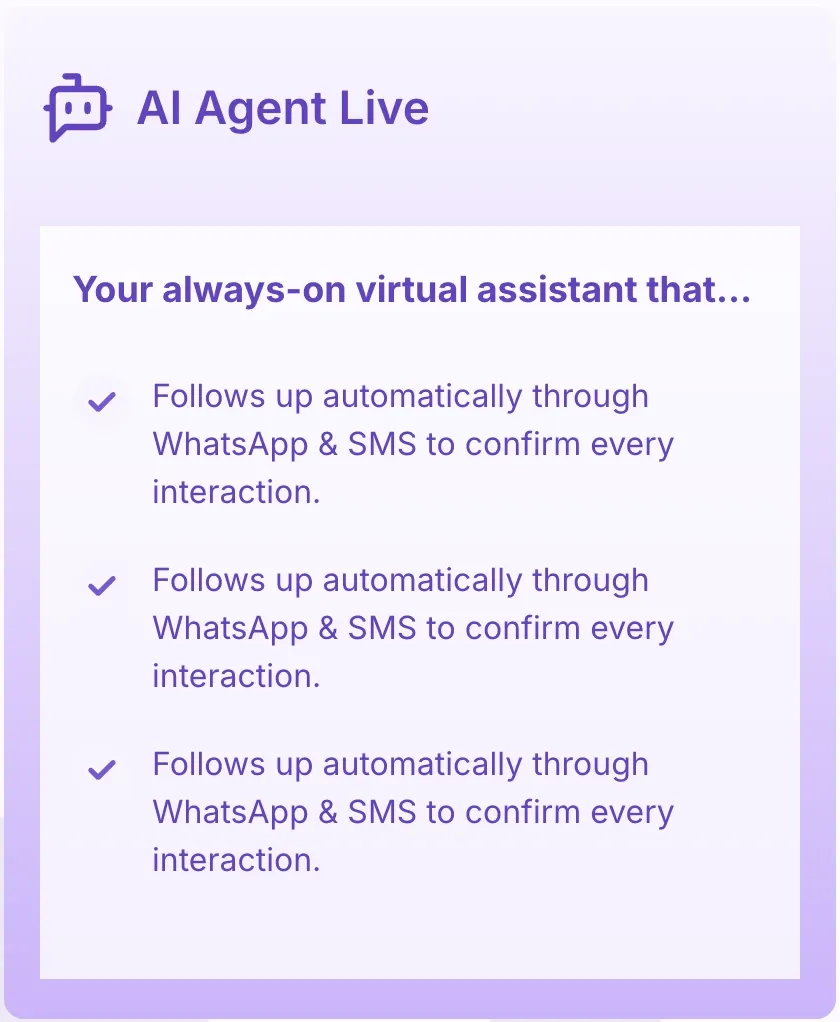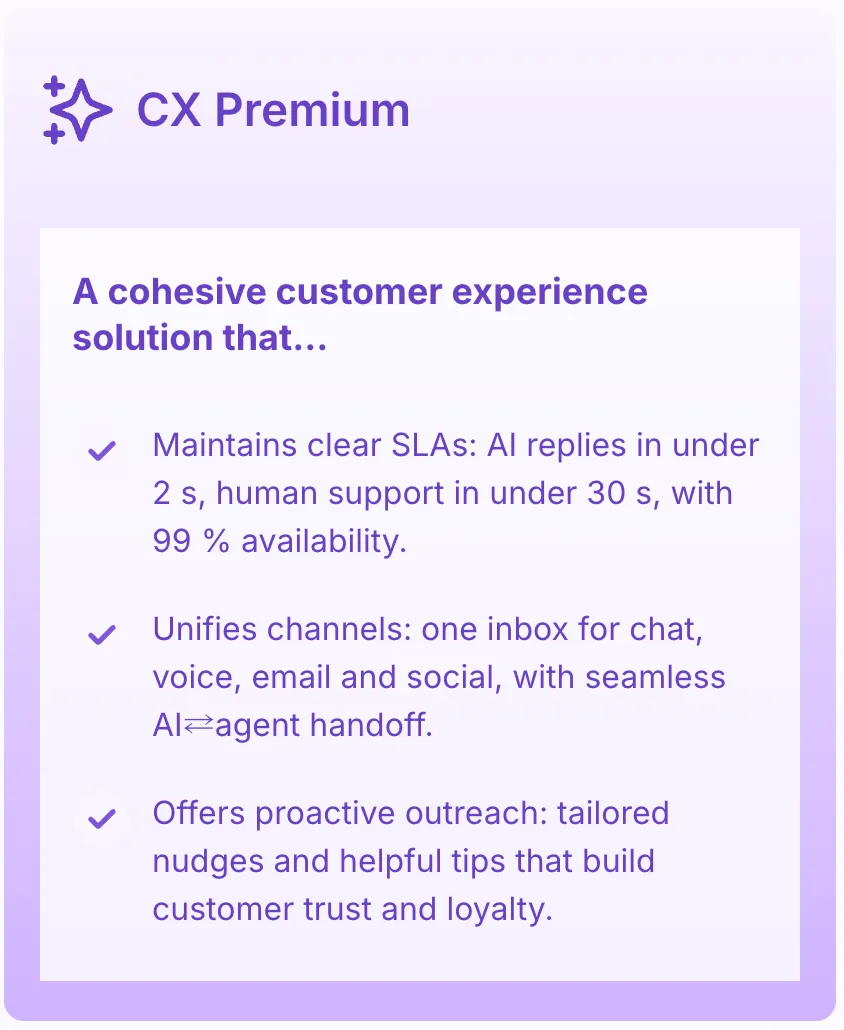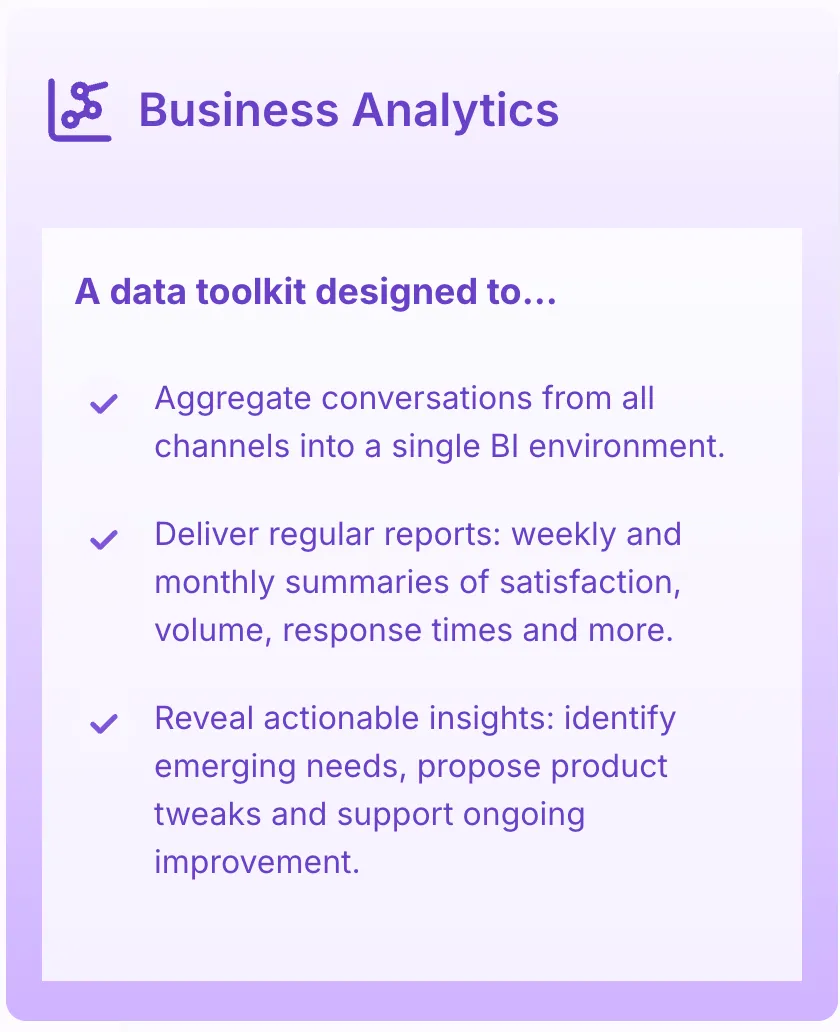AI and NLP work together to make these digital assistants capable of:
- Understanding what the customer wants
- Processing spoken or written language instantly
- Generating responses that make sense in context
- Learning and improving from each interaction
The market for voice bot technology is growing rapidly. According to research by Grand View Research, the voice bot market is expected to reach $5.6 billion by 2028 as more businesses look for efficient and scalable solutions for customer service.
These AI agents are changing the way customer service works by:
- Reducing wait times
- Being available 24/7
- Handling thousands of conversations at once
- Providing consistent quality of service
As businesses feel more pressure to deliver excellent customer service while keeping costs down, voice bots offer a solution that combines innovative technology with real-world benefits for businesses.
How Voice Bots Work
Voice bots operate through a sophisticated three-step process that transforms human speech into meaningful interactions. Let's break down each component:
1. Speech Recognition (ASR)
This component is responsible for converting spoken words into text. It uses various techniques to ensure accurate recognition, such as filtering background noise, adapting to different accents and speaking patterns, and processing multiple languages.
2. Natural Language Understanding (NLU)
Once the speech is converted into text, the NLU component analyzes it to understand the user's intent. It identifies key phrases and entities within the text, detects customer sentiment, and maps user requests to appropriate responses.
3. Text-to-Speech Synthesis (TTS)
After processing the user's request, the TTS component generates a natural-sounding response. It adjusts the tone and pitch of the voice for realistic delivery, supports multiple voices and languages, and maintains consistent speaking patterns.
The entire process happens in milliseconds: You speak to the bot, ASR captures and digitizes your voice, NLU processes your request, and TTS delivers the response in a natural-sounding voice. Modern voice bots can handle complex queries by analyzing both syntax (sentence structure) and semantics (meaning).
Continuous Learning for Improvement
Advanced voice bots go a step further by learning from each interaction. This allows them to improve their accuracy and response quality over time. Here are some capabilities that set these advanced bots apart:
- Recognizing context from previous conversations
- Handling multiple topics within one interaction
- Switching between languages seamlessly
- Adapting responses based on user preferences
These capabilities make voice bots increasingly sophisticated in handling customer service interactions, creating natural conversations that closely mirror human interactions.

Benefits of Voice Bots in Customer Service
Voice bots offer significant value to businesses through several key benefits:
1. Cost Reduction Through Automation
Voice bots can help businesses save money by automating tasks that would typically require human agents. Here are some ways voice bots contribute to cost reduction:
- Reduce operational expenses by up to 30%
- Handle thousands of customer inquiries simultaneously
- Cut training and recruitment costs
- Minimize human error-related expenses
2. Unlimited Scalability
Unlike traditional customer service methods, voice bots can easily scale to accommodate increased demand. This means businesses can handle sudden spikes in call volumes without any capacity limitations. Here are some advantages of unlimited scalability:
- Manage sudden spikes in call volumes
- No capacity limitations during peak seasons
- Zero additional costs for scaling operations
- Maintain service quality under high demand
3. Consistent Support Delivery
With voice bots, businesses can ensure consistent support delivery across all customer interactions. This is particularly important for maintaining brand reputation and providing a uniform experience. Here are some benefits of consistent support delivery:
- Standardized responses across all interactions
- Error-free information delivery
- Brand voice consistency
- Uniform customer experience 24/7
4. Enhanced Customer Engagement
Voice bots have the potential to greatly enhance customer engagement by providing instant support and personalized interactions. Here are some ways voice bots improve customer engagement:
- Zero wait times for customer inquiries
- Instant responses at any time
- Personalized interactions based on customer history
- Multi-language support capabilities
Real-world success stories demonstrate these benefits in action. Waste Connections saved $3.5 million by implementing voice bots in their customer service operations. The automation handled routine inquiries while allowing human agents to focus on complex cases requiring personal attention.
Voice bots transform customer service operations by combining cost efficiency with service excellence. These AI-powered solutions handle routine tasks with precision while maintaining high customer satisfaction levels through personalized, instant support.
Key Features of Voice Bots You Should Know About
Voice bots have powerful features that transform customer service operations. Let's explore the essential capabilities that make these AI-powered assistants invaluable for businesses:
1. Natural Language Understanding (NLU) & Processing
- Advanced algorithms interpret customer intent beyond basic keywords
- Real-time analysis of customer sentiment during conversations
- Ability to handle complex queries with contextual understanding
- Support for multiple languages and dialects
2. Data-Driven Personalization
- AI-powered analysis of customer interaction history
- Dynamic response adaptation based on customer preferences
- Customized recommendations using purchase patterns
- Behavioral insights to predict customer needs
3. Seamless CRM Integration
- Real-time access to customer data during interactions
- Automatic updating of customer records
- Integration with existing business tools and workflows
- Unified view of customer interactions across channels
These sophisticated features enable voice bots to handle complex customer service scenarios. The combination of NLU capabilities, personalization through data analytics, and CRM integration creates a robust system that delivers efficient, personalized customer support at scale. Businesses implementing voice bots with these features report significant improvements in customer satisfaction scores and operational efficiency.
Voice Bot Use Cases in Different Industries You Should Know About
Voice bots are transforming operations in various industries, each with specific applications designed to meet their unique requirements.
1. Retail
- Product recommendations based on purchase history
- Order tracking and delivery updates
- Inventory checks and stock availability
- Returns processing and refund status updates
2. Healthcare
- Appointment scheduling and reminders
- Prescription refill requests
- Insurance coverage verification
- Basic symptom assessment
- Medical bill inquiries
3. Financial Services
- Account balance checks
- Transaction monitoring
- Fraud alerts
- Bill payments
- Credit card applications
4. Travel and Hospitality
- Flight booking and status updates
- Hotel reservations
- Travel insurance inquiries
- Loyalty program management
- Itinerary modifications
5. Telecommunications
- Technical support troubleshooting
- Plan upgrades and changes
- Bill explanations
- Service outage updates
- Device activation assistance
These industry-specific applications have led to significant improvements in operations:
- 45% reduction in call handling time
- 60% decrease in customer wait times
- 35% increase in first-call resolution rates
- 24/7 service availability
- Handling of 1000+ simultaneous interactions
Voice bots can adapt to the regulatory requirements of each industry while ensuring compliance standards and data security protocols are upheld. This flexibility allows businesses to tailor solutions according to their specific customer service needs and operational objectives.

Future Trends in Voice Bots for Customer Service You Should Know About
Voice bot technology is rapidly evolving with groundbreaking innovations that reshape customer service interactions. The latest Natural Language Processing (NLP) advancements enable voice bots to understand complex queries, detect subtle language nuances, and maintain context throughout conversations.
1. Enhanced Emotional Intelligence
Voice bots are becoming more emotionally aware, allowing them to connect with customers on a deeper level. Here are some key features of enhanced emotional intelligence in voice bots:
- Recognition of customer sentiment through voice tone analysis
- Adaptive responses based on detected emotional states
- Real-time adjustment of conversation style to match customer mood
2. Advanced NLP Capabilities
Natural Language Processing (NLP) plays a crucial role in enabling voice bots to understand and respond to customer queries effectively. The following advancements in NLP capabilities are shaping the future of voice bots:
- Understanding of colloquialisms and regional dialects
- Processing multiple languages simultaneously
- Contextual memory for personalized interactions
3. Multimodal Integration
Voice bots are expanding beyond audio-only interactions to create rich, multi-sensory experiences. This multimodal integration enhances the overall customer service experience by incorporating visual and gestural elements. Here are some examples of multimodal integration in voice bots:
- Visual elements synchronized with voice responses
- Gesture recognition for enhanced interaction
- Integration with AR/VR technologies for immersive support
The integration of biometric authentication adds an extra layer of security, allowing voice bots to verify customer identities through voice patterns. Machine learning algorithms continuously improve response accuracy by learning from each interaction, creating increasingly natural conversations.
These technological advancements drive voice bots toward human-like interactions, with predictive analytics anticipating customer needs before they arise. The combination of emotional intelligence and multimodal capabilities creates a more engaging and effective customer service experience.

Implementing Voice Bots for Business Success: A Comprehensive Guide You Should Know About
Successful voice bot implementation requires strategic planning and understanding of your business needs. Here's what you need to know about maximizing ROI and scalability:
Cost-Saving Analysis
- Reduce operational costs by 30-50% through automated customer interactions
- Cut training expenses with standardized response protocols
- Minimize infrastructure costs with cloud-based voice bot solutions
- Decrease average handling time (AHT) by 25%
ROI Optimization Strategies
- Track key performance indicators (KPIs):
- First contact resolution rates
- Customer satisfaction scores
- Call deflection rates
- Average response time
- Measure cost per interaction compared to human agents
- Calculate savings from reduced staff turnover
Scalability Benefits
- Handle 1000+ simultaneous conversations without quality compromise
- Adjust capacity instantly during seasonal peaks
- Deploy across multiple time zones and languages
- Scale resources based on real-time demand
Implementation Best Practices
- Start with specific use cases
- Train voice bots on historical customer interaction data
- Integrate with existing CRM systems
- Set up performance monitoring dashboards
- Create clear escalation paths to human agents
Resource Planning
- Allocate budget for initial setup and maintenance
- Plan for regular updates and improvements
- Invest in team training for bot management
- Consider hybrid models combining AI and human support
The right implementation strategy transforms your customer service operations while delivering measurable business value. Voice bots offer a powerful solution for businesses seeking to enhance their customer service capabilities while maintaining cost efficiency.
Conclusion
Voice bots are a game-changing solution for modern customer service operations. These AI-powered assistants provide tangible benefits such as:
- Reduced operational costs
- 24/7 customer support availability
- Consistent service quality
- Improved response times
- Enhanced scalability
The implementation of voice bots creates a win-win situation. Businesses benefit from streamlined operations and significant cost savings, while customers enjoy instant support and personalized interactions. The technology's ability to handle multiple conversations simultaneously eliminates wait times and frustration.
The rapid advancement of NLP and AI technologies continues to enhance voice bot capabilities. From emotional intelligence to multilingual support, these systems grow more sophisticated and human-like in their interactions.
Your business can't afford to ignore this revolutionary technology. Voice bots aren't just a trend - they're becoming an essential component of successful customer service strategies in our digital age.
FAQs (Frequently Asked Questions)
What are voice bots for customer service and why are they important ?
Voice bots for customer service are AI-driven agents that use natural language processing (NLP) to interact with customers via voice. They are important because they automate customer interactions, improve engagement, and tap into a growing $5.6B market with significant growth projections.
How do voice bots work using ASR, NLU models, and TTS technologies ?
Voice bots capture vocal input through Automatic Speech Recognition (ASR), interpret user intent and sentiment using Natural Language Understanding (NLU) models, and convert responses back to audio via Text-to-Speech (TTS) technology. This combination enables seamless, human-like conversations.
What are the main benefits of implementing voice bots in customer service ?
Implementing voice bots offers cost savings through automation, scalability during peak times, consistent support delivery, and enhanced customer engagement and retention by providing personalized and efficient interactions.
Which key features should businesses look for in a voice bot for customer service ?
Businesses should look for voice bots that leverage advanced NLU/NLP interactions, enable personalized customer experiences through data analytics, integrate seamlessly with CRM systems, and provide reliable automated support tailored to customer needs.
In which industries have voice bots proven to improve operational efficiency ?
Voice bots have positively impacted operational efficiency across various sectors including retail, healthcare, and finance by automating routine inquiries, streamlining workflows, and delivering industry-specific applications that enhance overall service quality.
What future trends are shaping the development of voice bots in customer service ?
Future trends include advancements in NLP for more intuitive conversations, integration of emotional intelligence to better understand customer feelings, and evolution towards multimodal interactions combining voice with other communication channels for richer engagement.












